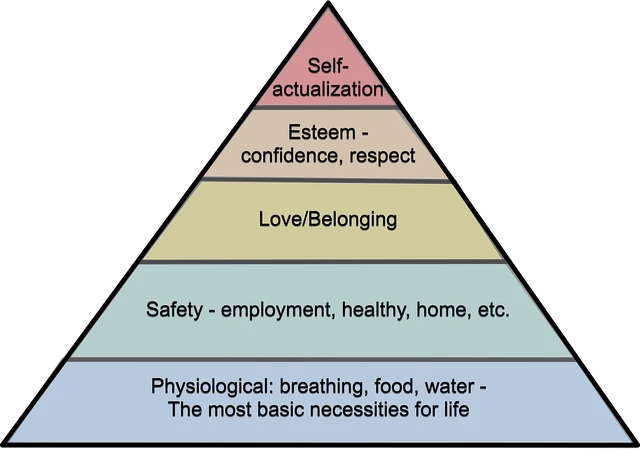Have you ever wondered what is the driving force behind our goal pursuits? Delving into the perpetual quest for life satisfaction, Abraham Maslow’s Hierarchy of Needs presents a distinctive viewpoint. Maslow’s groundbreaking theory explores the fundamental needs that propel human behavior, from the basic to the complex. In this blog, we will delve into the layers of Maslow’s Hierarchy to uncover the keys to unlock the mysteries of life.
Unveiling Maslow’s Hierarchy of Needs

Why is it important to understand the Maslow’s Hierarchy?
Understanding Maslow’s Hierarchy of Needs is crucial for individuals, educators, and leaders as it provides valuable insights into human motivation and behavior. The hierarchy offers a framework for comprehending the diverse needs that influence our actions, aiding personal development, relationship-building, and leadership strategies.
Here is an Explanation of the Maslow’s Hierarchy of Needs!
- Physiological Needs: At the base of Maslow’s pyramid lies our physiological needs—fundamental requirements for survival. Maslow believed that satisfying these basic requirements is crucial before progressing to higher levels of the hierarchy. As we fulfill these needs, we create a solid foundation, paving the way for growth.
- Security and Safety Needs: Ascending the pyramid, we encounter the need for security and safety. This level highlights our innate desire for order and control in our lives. Maslow’s Hierarchy suggests that actions motivated by these needs are essential steps in the pursuit of Satisfaction.
- Social Needs: After the safety level, social needs come into play. Maslow recognized the significance of emotional connections and belonging in human behavior. Friendships, family relationships, and community involvement fulfill our social needs, fostering a sense of acceptance. In this interconnected network, individuals find support, enhancing their overall well-being.
- Esteem Needs: Moving further up the pyramid, we reach the realm of esteem needs. Maslow highlights the importance of recognition, accomplishment, and personal worth at this level of needs. According to Maslow, esteem drives us to contribute to the world through professional activities, academics, or hobbies. Satisfying these needs fosters confidence and a positive self-image.
- Self-Actualization Needs: The pinnacle of Maslow’s Hierarchy is the self-actualization needs. Here, individuals become self-aware, less concerned with external opinions, and focused on personal growth. Maslow believed fulfilling this ultimate need involves complete talents, capabilities, and potentialities.
Conclusion
In conclusion, Maslow’s Hierarchy of Needs offers a profound insight into the intricacies of human motivation. Undoubtedly, this theory has left an undeniable mark, though criticisms persist. Its influence spans across diverse domains, encompassing realms such as psychology, education, and business. At its core lies a conceptual pyramid unraveling the intricacies of our profound desires and delineating the necessary steps for a life rich in significance.
- Advertisement -
Whether you fully embrace Maslow’s Hierarchy or not, the theory prompts us to consider the layers of human needs and interactions. As we navigate through the pyramid, from physiological requirements to self-actualization, we better understand what drives us as individuals. So, the next time you find yourself running in the pursuit of life satisfaction, remember Maslow’s Hierarchy of Needs—your guide to unlocking the secrets of a fulfilling life.


